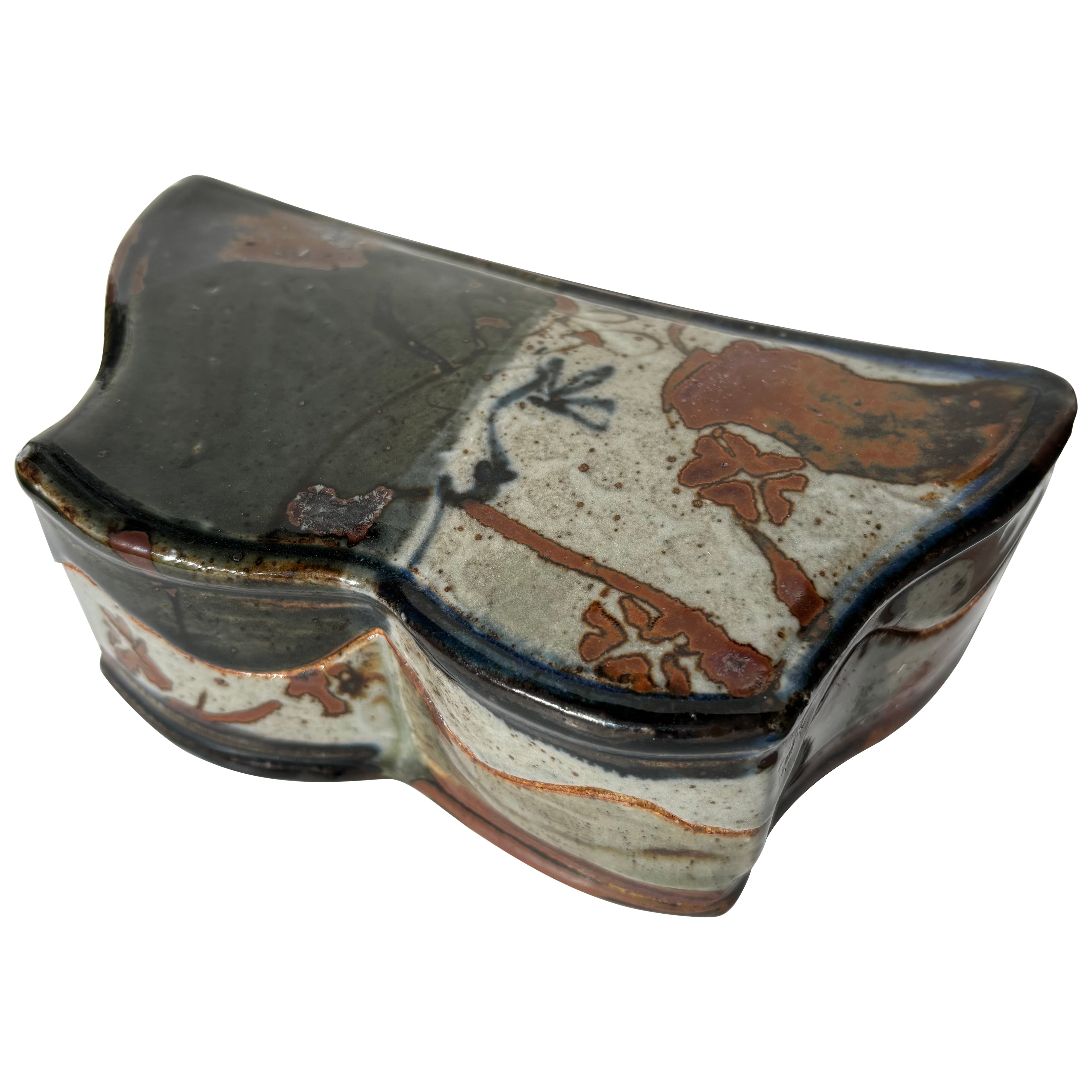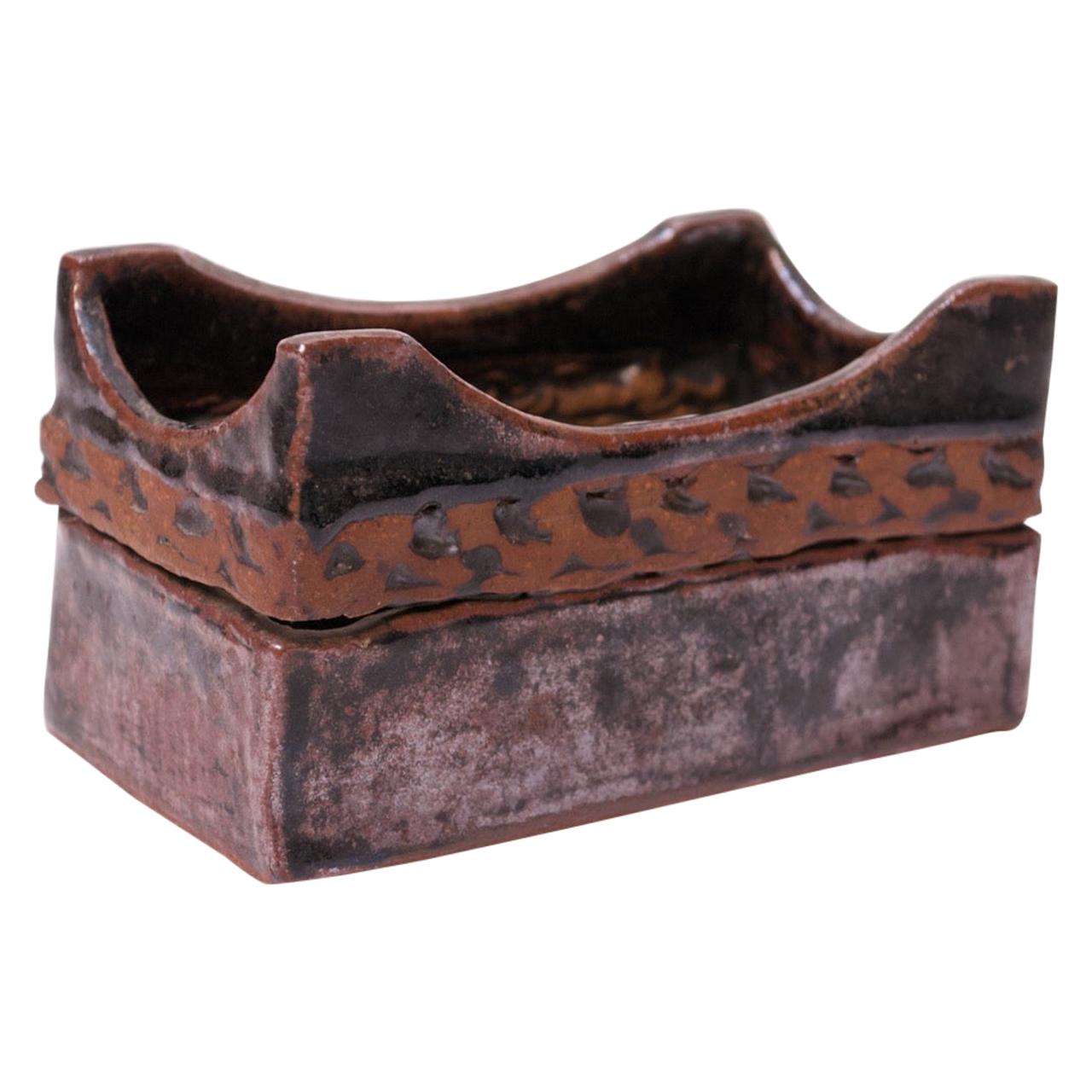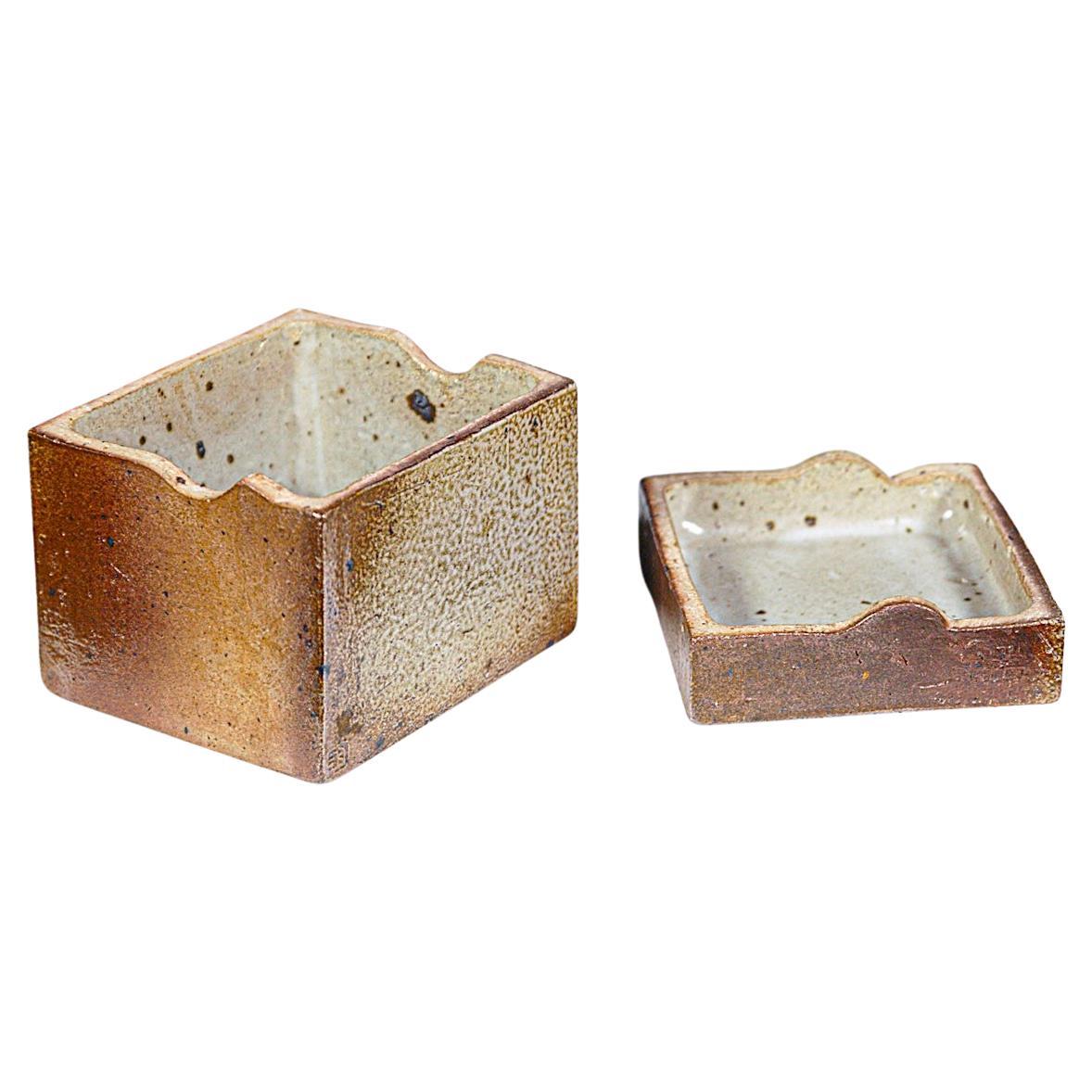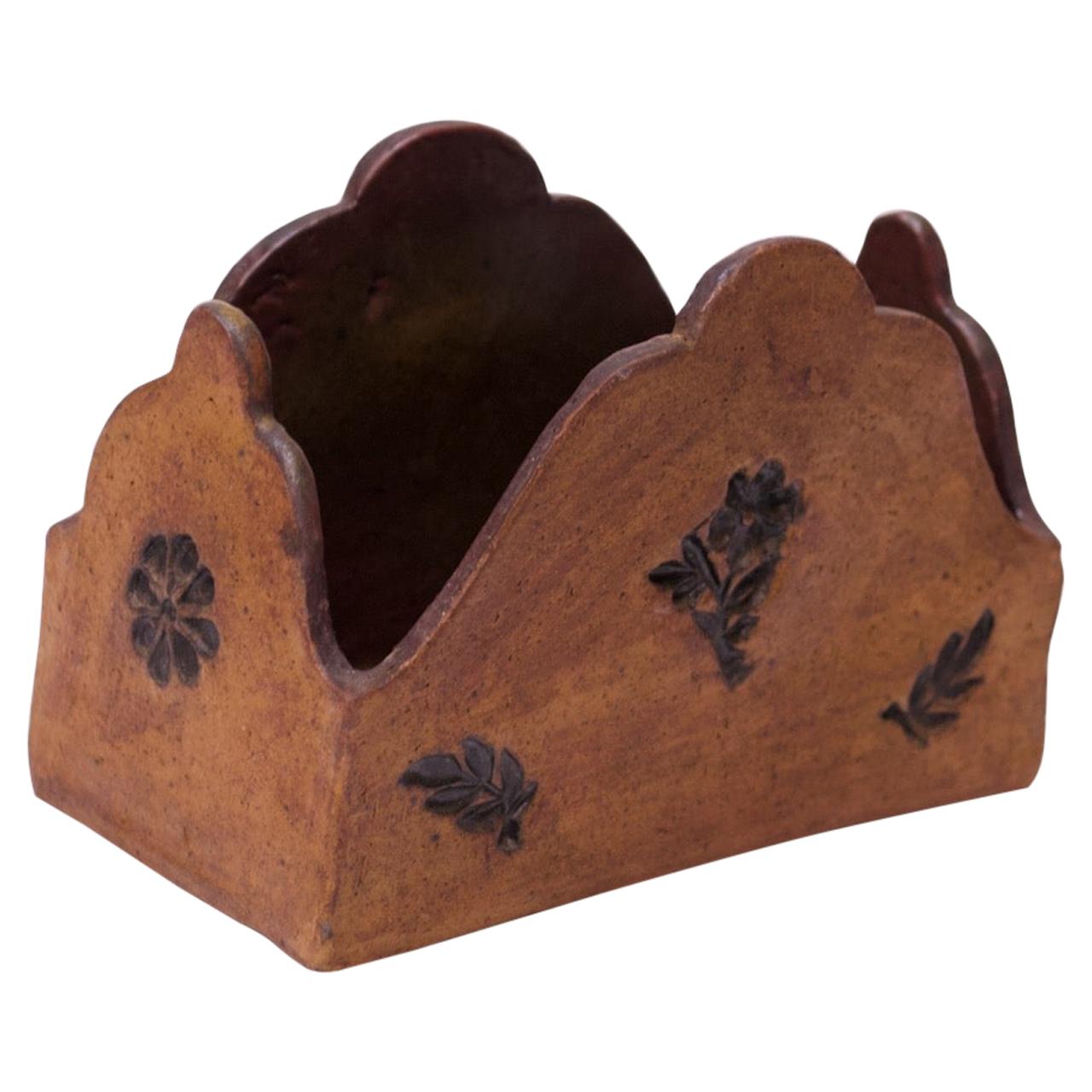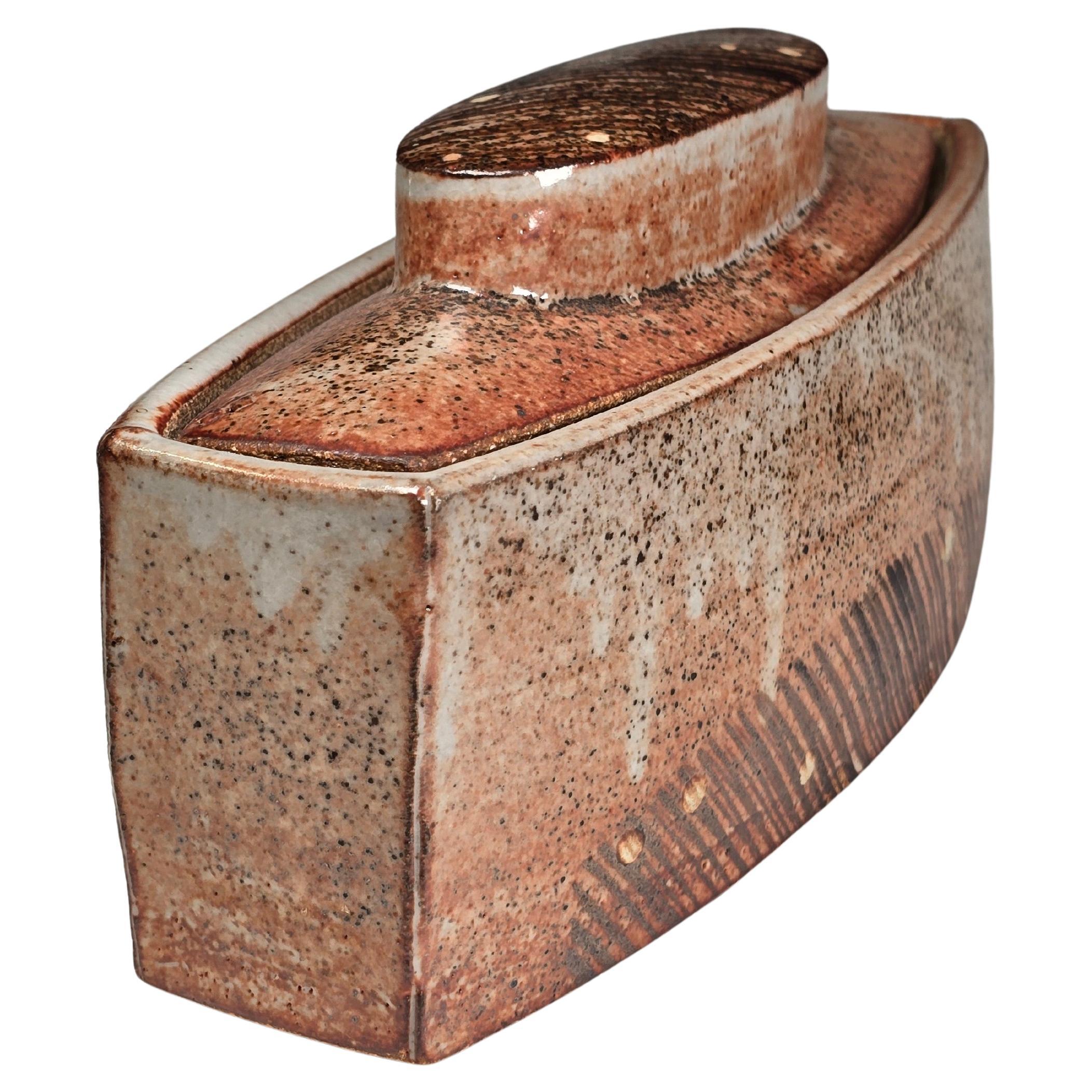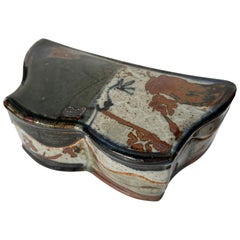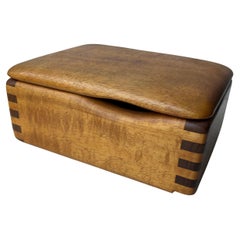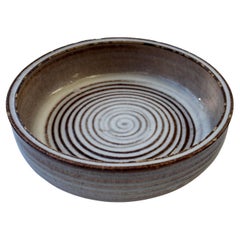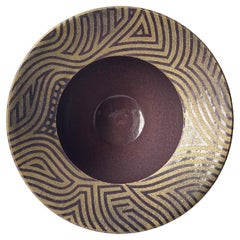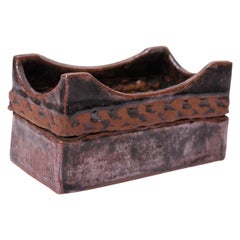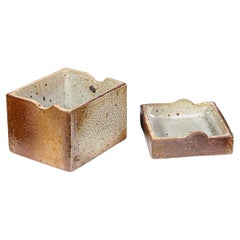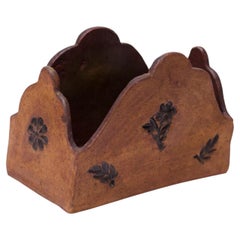Items Similar to John Glick pottery/stoneware box , jewelry/ table box, signed .
Want more images or videos?
Request additional images or videos from the seller
1 of 7
John Glick pottery/stoneware box , jewelry/ table box, signed .
$600per item
£458.89per item
€525.16per item
CA$853.96per item
A$924.59per item
CHF 491.56per item
MX$11,151.25per item
NOK 6,181.70per item
SEK 5,763.11per item
DKK 3,922.28per item
Quantity
About the Item
Beautiful box with waved design in stoneware / ceramic. Made by Plum Tree Potters, John Glick.
- Creator:John Glick (Artist)
- Dimensions:Height: 2.5 in (6.35 cm)Width: 7 in (17.78 cm)Depth: 3.75 in (9.53 cm)
- Style:Modern (Of the Period)
- Materials and Techniques:
- Place of Origin:
- Period:
- Date of Manufacture:n/a
- Condition:Wear consistent with age and use. Shows some glaze and flea bites loses .
- Seller Location:Los Angeles, CA
- Reference Number:1stDibs: LU808942332052
About the Seller
5.0
Vetted Professional Seller
Every seller passes strict standards for authenticity and reliability
Established in 1993
1stDibs seller since 2005
290 sales on 1stDibs
Typical response time: 1 hour
Associations
20th Century Specialists
- ShippingRetrieving quote...Shipping from: Los Angeles, CA
- Return Policy
More From This Seller
View AllJohn Glick ceramic /stoneware box / jewelry / table box , signed
By John Glick
Located in Los Angeles, CA
Beautiful box / jewelry / table desk box. made for the well known artist / potter , John Glick , for Plum Tree Potters .
Category
Late 20th Century American Post-Modern Decorative Boxes
Materials
Stoneware
Dean Santner wood box / jewelry /decorative . Signed
By Dean Santner
Located in Los Angeles, CA
Beautiful wooden box by the well known Dean Santner .
Category
Late 20th Century American Modern Decorative Boxes
Materials
Wood
Laura Andreson ceramic/pottery bowl signed and dated 1952
By Laura Andreson
Located in Los Angeles, CA
Nice and traditional Laura Andreson pottery / ceramic bowl, signed and dated 1952
Category
Vintage 1950s American Modern Decorative Bowls
Materials
Pottery
Michael Arntz Ceramic/Pottery Bowl /Centerpiece, Signed Dated
By Michael Arntz
Located in Los Angeles, CA
Great sample of the later work of the very well known ceramist/ potter artist Michael Arntz. Similar geometric design are in Museums now.
Category
21st Century and Contemporary American Post-Modern Ceramics
Materials
Ceramic
Philip Cornelius Pottery / Ceramic Lidded Jar, Decorated and Signed
By Philip Cornelius
Located in Los Angeles, CA
Nice decorated jar by the well known California potter Philip Cornelius. signed 3 lines in bottom Cornelius.
Category
Vintage 1970s American Modern Pottery
Materials
Pottery
Polia Pillin rare footed bowl with lid ceramic/ pottery , signed .
By Polia Pillin
Located in Los Angeles, CA
Beautiful and rare footed , lidded bowl decorated with horses by the very well known Artis, Polia Pillin .signed in bottom, Pillin .
Category
Mid-20th Century American Modern Decorative Bowls
Materials
Pottery
You May Also Like
Studio Pottery Glazed Stoneware Sculptural Box Signed "Polk 70"
Located in Brooklyn, NY
1970 Polk stoneware "box" with a high-gloss black glaze blended with white, resulting in a smudged black and almost pink base color with burnt orange banding. Crude by design with an...
Category
Vintage 1970s American Mid-Century Modern Ceramics
Materials
Stoneware
Box in Ceramic (signed: 10 50), French
Located in Ciudad Autónoma Buenos Aires, C
Ceramic
We have specialized in the sale of Art Deco and Art Nouveau and Vintage styles since 1982. If you have any questions we are at your disposal.
Pushing the button that reads 'V...
Category
Vintage 1940s French Art Deco Centerpieces
Materials
Ceramic
A Stoneware Box by Barbara Delfosse La Borne France 1970's
By Barbara Delfosse
Located in HYÈRES, FR
A Stoneware Box by Barbara Delfosse La Borne France 1970's.
Very beautiful shade of wood-fired sandstone.
Signed with a stamp at the bottom.
Very nice condition.
Category
Vintage 1970s French Decorative Boxes
Materials
Stoneware
Studio Pottery Incised Stoneware Box Signed "Polk 70"
Located in Brooklyn, NY
1970 Polk stoneware "box" with a brown matte glaze that bears a wood-like appearance. Incised floral detail present on all sides.
"Polk '70" signature present to the underside.
Category
Vintage 1970s American Mid-Century Modern Ceramics
Materials
Ceramic
Studio Pottery Box by Sequoia Miller
By Sequoia Miller
Located in Kilmarnock, VA
This striking studio pottery box by Dr. Sequoia Miller was created in the 1990s, a formative period before he shifted from full-time maker to one of the most important thinkers and c...
Category
1990s American Decorative Boxes
Materials
Stoneware
$640 Sale Price
20% Off
1980's, Postmodern Ceramic Box with Lid Signed SB
Located in San Diego, CA
Beautiful ceramic box with lid circa 1980's great graphics and colors with awesome glaze, no chips or cracks signed at the bottom SB.
Category
20th Century American Post-Modern Decorative Boxes
Materials
Ceramic
$300 Sale Price
20% Off
More Ways To Browse
John Glick Pottery
Antique Metal Bins
Black Onyx Box
Exotic Wood Box
Half Doll
Leather Storage Box
Mid Century Stone Black And White Box Boxes
Pietra Dura Panels
Square Wood Box
Swedish Box 18th
T Boone Pickens
Antique Strongbox
Beautiful Wood Boxes
Boulle Box
Cameo Box
Candle Boxes
Eggshell Deco
English Enamel Boxes
